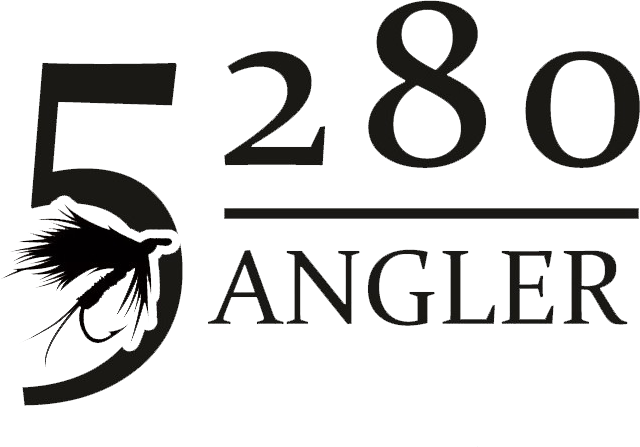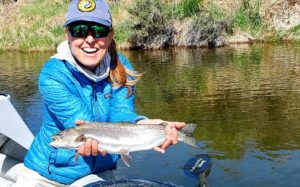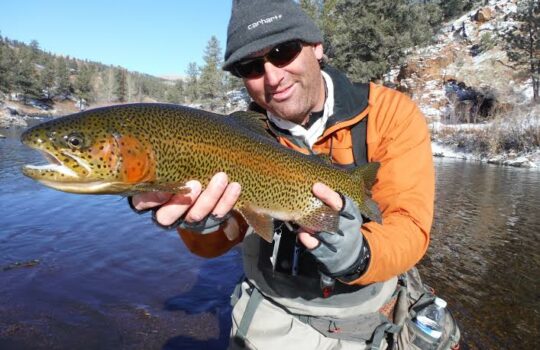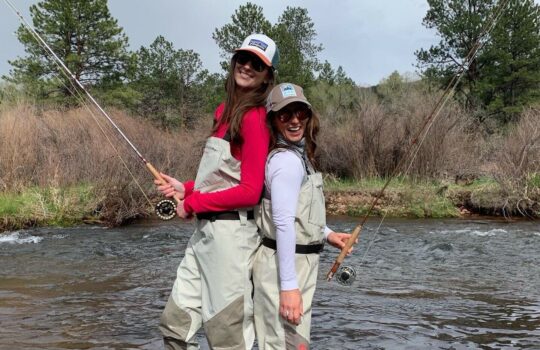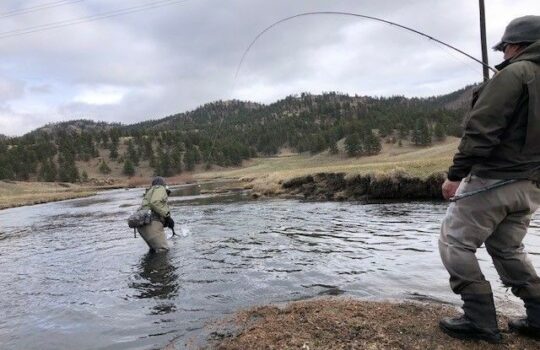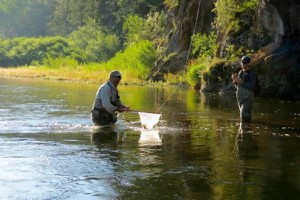
Of course it is important for a fly fisher to focus attention on fly selection, reading the water, and presentation, but often changing a bad habit results in a greater impact on catching fish. There are a lot of bad habits anglers have, but there is one that has a very easy fix and doesn’t require countless hours on the water to notice improvement. The habit I am referring to is habitually breaking off rigs.
There is nothing more frustrating than break-offs, especially during a battle with a big fish. And flies, tippet, and leader are costly, but worst of all an angler who is always repairing rigs on the beach is not fishing, and thus not catching. Snags are going to happen whether it’s a dry fly wrapped around tree branch or a nymph rig lodged under a rock, but many break-offs are the result of bad habits and are not by accident.
If you are an angler that always seems to break off the BIG one or often lose flies on rocks and trees, these tips can probably help. Here is a list of bad habits I have identified that lead to unnecessary break-offs and simple tips to remedy them:
1) Not moistening knots before setting them. This is a simple fix. Make sure you moisten all knots with a bit of saliva before setting them. If you don’t they lose their strength. The knot I use the most of the time is a simple 5 or 6 wrap Clinch Knot. If tied and set correctly it’s perfectly strong.
2) Tying thin tippet to large flies. The terminal end of your leader or tippet should be paired to the size of the flies you are casting. Tying 4X or 5X to large streamers with large hook eyes will end badly. If you are lucky enough not to lose the fly during the cast you’ll probably not be as lucky when a large fish takes it. Make sure and use larger diameter leaders or old cut-back leaders when fishing larger streamers.
3) Splicing THICK diameter leader to thin diameter tippet. 5X tippet cannot be successfully spliced together with thick 00X-2X leader material. Leader and tippet need to be close in diameter for a Surgeon’s or Blood Knot to be hold. Purchase multiple rolls of tippet, from 0X-6X in order to confidently rebuild a taper back to a leader. Better yet, start your fishing trip with a new leader and keep your old, thick, cut-back leaders for streamer fishing.
4) Incorrect Blood Knots. Blood Knots are a bit stronger than a Surgeon’s knots if tied correctly-correctly being the operative word. Avoid blood Knots and use a Double Surgeon’s for splicing tippet to leader. They are fast, strong, and easy to do. Blood knots are only a little stronger but they can be tedious, slow, and easy to incorrectly tie for most anglers. You need know how to do both, but for most situations a Double Surgeon’s is the way to go.
5) Crimping metal shot directly to leader without a stopper knot. If you are using weights to get your nymphs down first splice on a length of tippet to your leader, then add your weights above the knot. This will prevent your weights from sliding on your leader and fraying the line.
6) Too much false casting. Too much false casting is a nasty habit. Over doing the false cast creates the potential for wind knots, frays from sweeping branches and brush, and puts unnecessary stress on knots. The worst scenario is false casting an indicator nymph rig with weight and multiple flies. That is recipe for disaster. Learn to properly roll cast by slowly lifting the rod tip, loading the fly line on the water’s surface, then executing a forward roll of the line. Roll casts are accurate, don’t require line loaded overhead (so your flies will never get caught behind you) and virtually eliminate the chances of wind knots and avoidable snags.
7) Pulling the wrong direction to get out submersible snags. There is only one direction to pull a fly rod to dislodge a bottom snag-directly upstream of the snag and low to the water. When your nymph rigs snags bottom walk up stream of the snag, strip in most of your line, and pull sharply at a low angle upstream. Most of the times you will get your flies free on the first pull.
8) Setting the hook in the wrong direction with a nymph rig. When you are fishing a nymph rig the best way to set the hook on a potential fish is at a low angle to the water and in the down-stream direction. Fish face upstream so setting the hook downstream is ideal. This accomplishes two things. 1) You will hook more fish. 2) The surface tension of the water will hold your flies in the water, so even if you miss the fish your entire rig won’t fly up in the air and make a mess- either by knotting up, wrapping around your rod tip, or getting caught in a tree.
9) Tying onto rusty old hooks. I know it is difficult to throw away a fly, but tying soft tippet onto the eye of a scratchy, rusty, old hook is not a good idea. It’s bound to break off and probably in the mouth of an unfortunate trout.
10) Laziness. It is important to vigilantly inspect your tippet and leader for visible, frays, imperfections, and small wind knots; and then repairing or replacing any damaged areas. Don’t be lazy. By putting in an ounce of prevention you will avoid frustrating break-offs, save money on flies, and just maybe land the fish of a lifetime.
